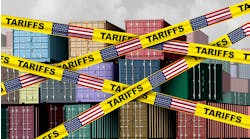Although many sectors of the economy are stalling, by all accounts the turbines of the wind energy manufacturing sector are still spinning away, at least if a recent American Wind Energy Association (AWEA) and Great Lakes Wind Network event are any indication.
Held at the Intercontinental Hotel conference center in Cleveland, Ohio on 8-9 December, 2008, the event was billed as a Wind Power Supply Chain Workshop and featured information for those looking to learn how to gain entry into the turbine manufacturing by new investment or retooling, as well as information for turbine suppliers on how to ramp up their company's current efforts. According to event organizers from AWEA and WIRE-Net, the event followed previous efforts in and around the Midwest in selling out capacity, with 800 attendees and another 250 on the waiting list.
"If you didn't know we were in a recession, you wouldn't be able to tell looking at the conference," says Ed Weston, Director of WIRE-Net's Great Lakes Wind Network. "The turnout was remarkable."
In line with this amount of interest, the AWEA paints a rosy market outlook for the sector based on the following figures:
- 8,000: the number of components in a modern wind turbine, ranging from steel towers and high-tech composites for blades, to gearboxes, bearings, electrical wiring, power electronics, and more;
- $1.3-1.5 billion: anticipated investments in Ohio prior to 2012 in wind turbine installations resulting from Ohio's new Renewable Electricity Standard (RES) passed in April of this year with the strong support of Governor Strickland and Speaker Husted;
- $15 billion: nationwide wind energy installation investment in 2008 (preliminary AWEA estimate based on 7,500 megawatts (MW) of generating capacity expected to be completed in 2008);
- 9,000: the number of jobs being created from recent wind turbine component manufacturing facility openings and announcements (first through third quarters of 2008);
- 60,000: the number of jobs in wind power today;
- 50%: the share of domestically manufactured wind turbine components today-up from 30% in 2005;
Weston gave two presentations at the conference himself -- the first on the anatomy of a turbine, and the second on "six tips for retooling" to take advantage of the booming wind turbine manufacturing market. Other speakers and panelists included AWEA membership director Britt Theismann and several AWEA colleagues as well as Ian Cluderay, VP of supply chain at Clipper Windpower, Tom Maves from the Ohio Department of Development, Rob Banerjee, VP of WebCore Technologies, among others.
Although large area manufacturers with significant industry presence were well represented, Weston says a number of the spots were taken up by smaller manufacturers looking to get in on the ground floor. Attendees at these supply chain events have run the gamut of wind systems components and installation equipment suppliers, from power electronics and control systems producers to manufacturers of hydraulics, machine shops and even hoist manufacturers, fire suppression equipment suppliers and meteorological equipment makers.
It's a huge and growing market, said Weston. "Most manufacturers are entrepreneurs at heart, looking for new products for their factories," he said. "The wind turbine industry is growing too big to be ignored."
In a sign of that growing market's clout, Ohio's Democratic Governor Ted Strickland made an appearance at the Intercontinental for a speech and a press conference. Strickland, who signed a renewable portfolio standard (RPS) earlier this year, spoke of where wind power fits at the intersection of state and private utility initiatives.
"I have talked with the major CEOs of the utilities that serve Ohio, and they've expressed interest in diversifying their electrical production capacities and... are already pursuing those efforts," said Strickland.
"I think if we had not passed a renewable standard, that I wouldn't be having the conversations that I'm having, or that our Department of Development is having, with different companies," said Strickland. "It's giving them confidence that there will be a market should they build and invest."
Over the course of the last year of the presidential campaign, Strickland also spoke with the president-elect and said "I think (Obama) will be a very strong supporter of green energies, and certainly wind energy will be a form of that, as well as solar."
And although Strickland also admits that the recession of the last year is "impacting every aspect of our nation's and our state's economy," he hadn't seen a downturn in wind energy projects as a result. "I'm aware of certain initiatives not related to wind energy that have been put on hold because of financing," Strickland said. "It's my sense that the interest in continuing to pursue these opportunities in Ohio has not diminished as far as this particular industry is concerned. I've talked with component part manufacturers that are doing work here in Ohio. I've got the sense that this is one industry that has a bright future, and is full-steam ahead."
For more information, visit: http://www.awea.org/events/supplychain2/agenda.html



